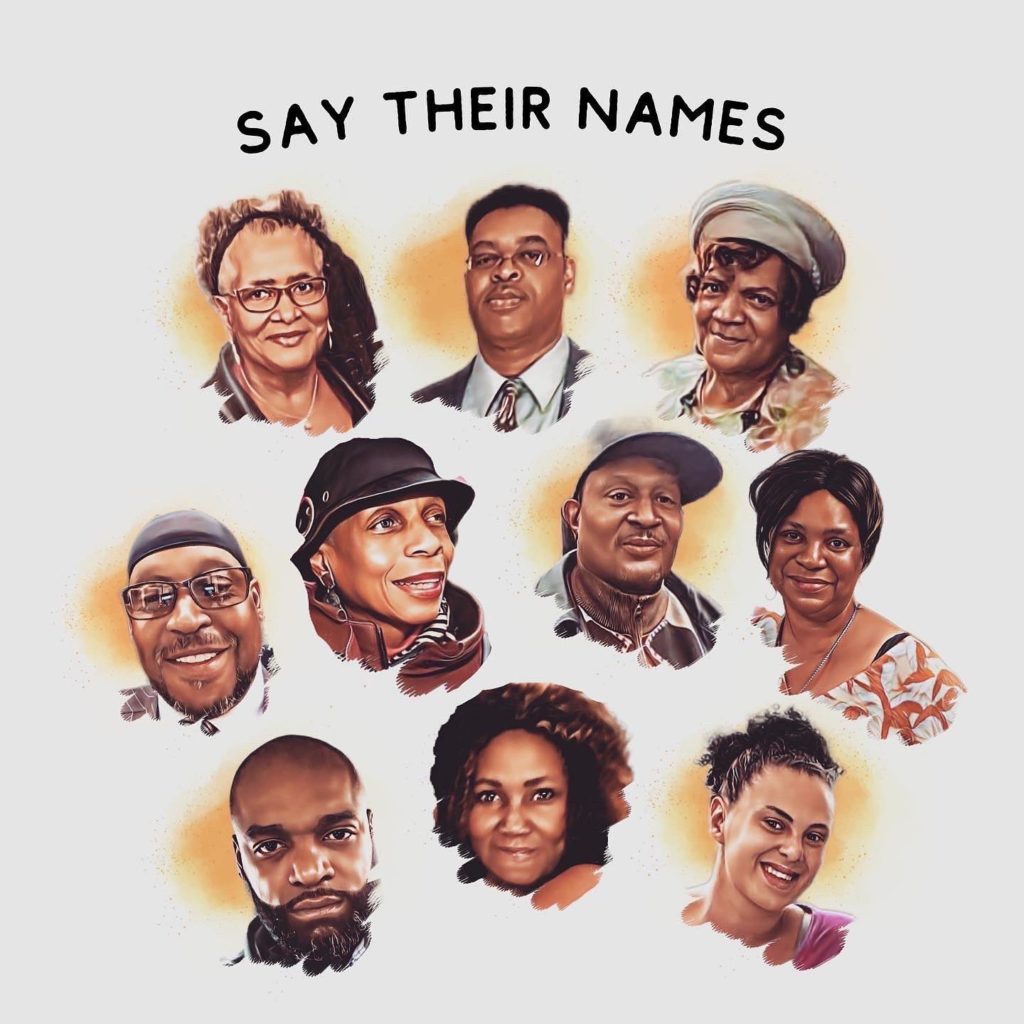BY PAT SMITH, TFN PRESIDENT & CEO
Margus Morrison was picking up snacks for a weekly movie date night with his wife.
Celestine Chaney had stopped in with her sister to buy strawberries for a shortcake recipe.
Andre Mackneill was there to get a surprise birthday cake for his young son.
And in a matter of seconds, they — and seven others — were gone. Ten lives cut short by a racist gunman who targeted their neighborhood grocery store in order to carry out an act of inexplicable violence.
Inexplicable. But not unfamiliar.
This Saturday, the Masten Park neighborhood of East Buffalo became the latest community terrorized by a radicalized white supremacist, a list that includes Charleston, El Paso and Christchurch.
I can’t look at the faces of those killed without seeing someone who looks like my brother, my grandmother, my nieces. Without seeing someone who looks like me.
It’s almost too much to process.
So as this sad and heavy week comes to an end, let’s start with the easiest part: How you can help the Buffalo community and survivors of this racist act of violence.
The Community Foundation for Greater Buffalo, a member of The Funders Network, has created The Buffalo Together Community Response Fund, in partnership with the United Way of Buffalo & Erie County and other philanthropic partners, to help address immediate community needs, long-term rebuilding and systemic issues in the aftermath of the the shooting.
Additionally, the Tops grocery chain and the National Compassion Fund has established the Buffalo 5/14 Survivors Fund to provide direct financial assistance to the survivors of the deceased and those directly affected by this tragedy. (You can find additional information on both of these efforts on the Buffalo Together webpage.)
Although this was the action of a lone gunman, this violence was not born in a vacuum. America’s history is steeped in racialized violence. And at just 18 years this gunman was already sufficiently immersed in the anti-Semitic, anti-immigrant and anti-Black language of replacement theory, which posits that malign forces are bent on replacing white people and stripping them of their innate power and privileges.
Once relegated to the dark fringes of the internet, this conspiracy theory has gone disturbingly mainstream with echoes of this madness coming from cable TV hosts and elected leaders.
As leaders in the philanthropic sector, I implore you to continue to invest in historically disempowered communities impacted by racism and support frontline, grassroot organizations through unrestricted funds and capacity-building resources.
Because racial violence can be inflicted not just by a lone gunman, but by systemic, racist policies and practices as well.
A recent New York Times story points out that Buffalo “is split into two vastly different worlds, the East and West Sides. About 85 percent of Black Buffalo residents live in East Buffalo, and researchers have mapped the effects of the split on nearly every aspect of life, including education, job opportunities, housing and even life expectancy, according to a 2018 report from the Partnership for the Public Good.”
Black people in Buffalo live an average of five fewer years than white residents. (The national gap between white and Black life spans is an average of 3.6 years.)
“The pain is in our DNA at this point,” 64-year-old Earlene Patterson told the Times. “It’s in my great-grandfather, my father. It’s in me.”
This is the very community this gunman was drawn to, driving three hours to inflict even more racial trauma on the Black people of East Buffalo.
Investigators and pundits will surely pore over the motives of this terrorist, whose name I will not type much less utter out loud.
Instead, I’ll share this image created by artist Jen White-Johnson and posted on social media by our friends at The California Endowment, with the all-too-frequent reminder that comes after an act of racial violence: Say Their Names.
When you have a quiet moment, please reflect on these 10 souls whose lives deserve to be remembered as more than just a tragic data point.
Roberta A. Drury, 32
Margus D. Morrison, 52
Andre Mackneil, 53
Aaron Salter, 55
Geraldine Talley, 62
Celestine Chaney, 65
Heyward Patterson, 67
Katherine Massey, 72
Pearl Young, 77
Ruth Whitfield, 86
Say their names. Tell their stories. And may their memories fuel not only tears and fury, but action. Because it’s only through action that we’ll find any meaningful hope for change.

Image credits: (Top photo) Tina MacIntyre-Yee/ Rochester Democrat and Chronicle; (Illustration) Jen White-Johnson/ @jtknoxroxs
